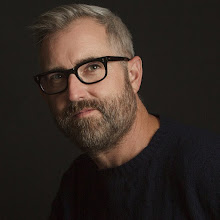Whenever I work on a screenplay, I rarely have to try to imagine the world I'm depicting. More often, the rooms, the colors, the neighborhoods, the sheets and pillow cases, the schools — essentially, anything that gets typed into Final Draft — already exist somewhere in my brain. The spaces are there. My job is to populate them with authentic characters. Dialogue, plot and character work is where I toil. Perhaps not surprisingly, going into production can be a rude awakening. A location scout can easily become a chase after an environment or building that, while very real to me, simply does not exist.
Films with large budgets don't have this problem. The more money you have, the more options. (Isn't that true of everything?) But limitations also force you to be creative. A scene imagined as a spacious lobby with lots of glass bricks becomes in reality a narrow, cinderblock hallway with no windows. Hardly your ideal setting.
Or is it?
"Are there any more options?" No, I'm told. I have minutes to decide whether or not this will work and, if not, whether the scene can be conceived in another location, re-written for this one, or scrapped completely. That's where the toiling in plot, dialogue and character comes in handy. Ideally, I know the script so well, so intimately, I can answer any of these questions without disturbing the narrative, a veritable house of cards. That's the goal.
Today's scout tested my skill in this area. Fortunately, we were scouting a location rich with possibilities and alternatives, not all of them appropriate, but all informative. Each "no" moved me and the producing team towards a deeper understanding of the world we're creating, the characters who inhabit it and an appreciation of flexibility when confronting creative challenges.
I remember fondly the first day of shooting "Loggerheads." It was a beach scene, a simple scene really. I believe the scene description went something like this --
EXT. BEACH -- DAY
George runs on the beach.
Crew call was early, before dawn. It was dark. We set up and, as the sun rose over the Atlantic Ocean, all I could see was fog. So thick you couldn't see but a few yards ahead. I thought we were doomed. I knew it could be several hours of waiting and we had no time to wait. Keep in mind that it was my first narrative feature and we'd done nothing yet. Not one shot. Not one take. My very first moment of directing. My mind raced. Could I re-write the scene to be morning? What would that do to the scenes that were supposed to be morning and where would I move them? The entire movie takes place over the course of three weekends in the lives of three main characters in three different years so there wasn't a lot of wiggle room, narratively speaking, and especially with this particular story line which involves two people getting to know one another. Each step in this story was a building block in their relationship. (I'll say it again: it's a house of cards!)
I decided I could adjust the script to accommodate the fog. This is what we got and it remains my favorite shot in the film.
The resulting image created some unexpected meaning for the story. The entire film is about people separated and searching. What could be more metaphorical than running through fog? And Michael Kelly's reaction upon seeing Kip Pardue sitting in the sand was worth the worry over this natural phenomenon.
Subscribe to:
Post Comments (Atom)

No comments:
Post a Comment